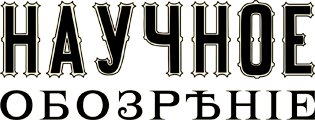Scientific journal
Scientific Review. Biological science
ISSN 2500-3399
ПИ №ФС77-57454
ISSN 2500-3399
ПИ №ФС77-57454
SPECIFICITY OF GENUS MICROTUS VOLE HELMINTHOFAUNA INHABITING AT URBAN ENVIRONMENT
Chernousova N.F. 1, 2
1 Institute Plant & Animal Ecology Ural Department RAS
2 The Ural Federal University
Helminthofauna of Microtus voles inhabiting the forest sites at the urban environment and forest were investigated. To analyze separate helminth species was not our aim. We estimated the indices of vole invermination with all helminths and with helminths, representing a potential danger for human. The second our goal was to compare the characteristics of helminthocenoses of voles inhabiting the forest urban sites of different degree disturbance. Common field voles in the forest were found to have much fewer helminth load than ones dwelling at the all studied urbanized sites. Almost all invermination indices were minimal in the voles from the forest. Helminth prevalence of voles was not connected with the level of anthropogenic load as it was similar at the intracity site with almost recreation absent and at the plot with maximum recreation. The highest intensity of invasion (of all helminths and the helminths dangerous to the people) was found out in the voles in the park-forest with the lowest recreation. Separate position of the forest democenosis cluster from others indicates the real differences between urbanized and forest democenoses what most likely is the result of changes in the structure and abundance of rodent communities of forest ecosystems under the impact of urbanization that influence upon vole helminthocenoses. Presence at some park-forests of the large number of stray dogs aggravates parasitic situation at the recreation city places.


 science-review.ru
science-review.ru